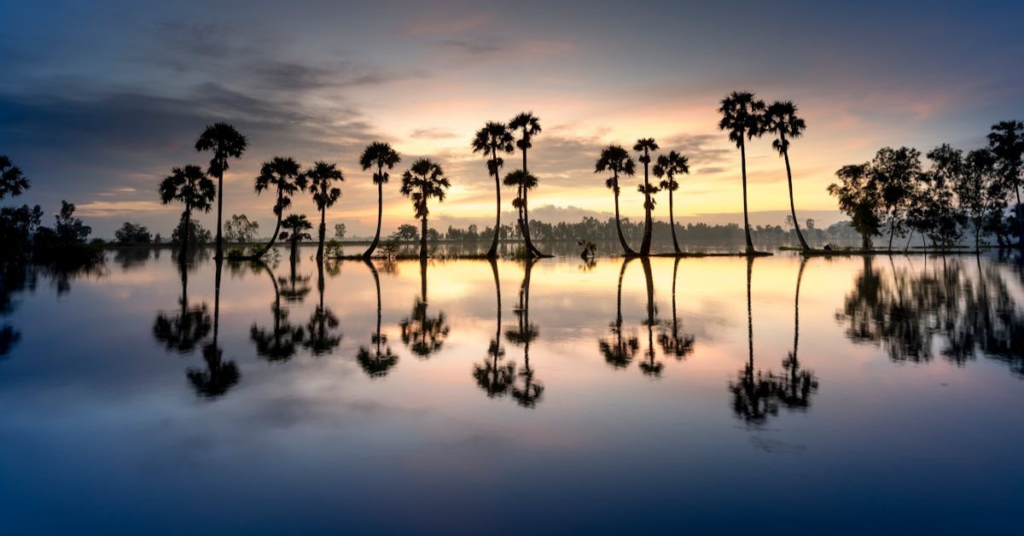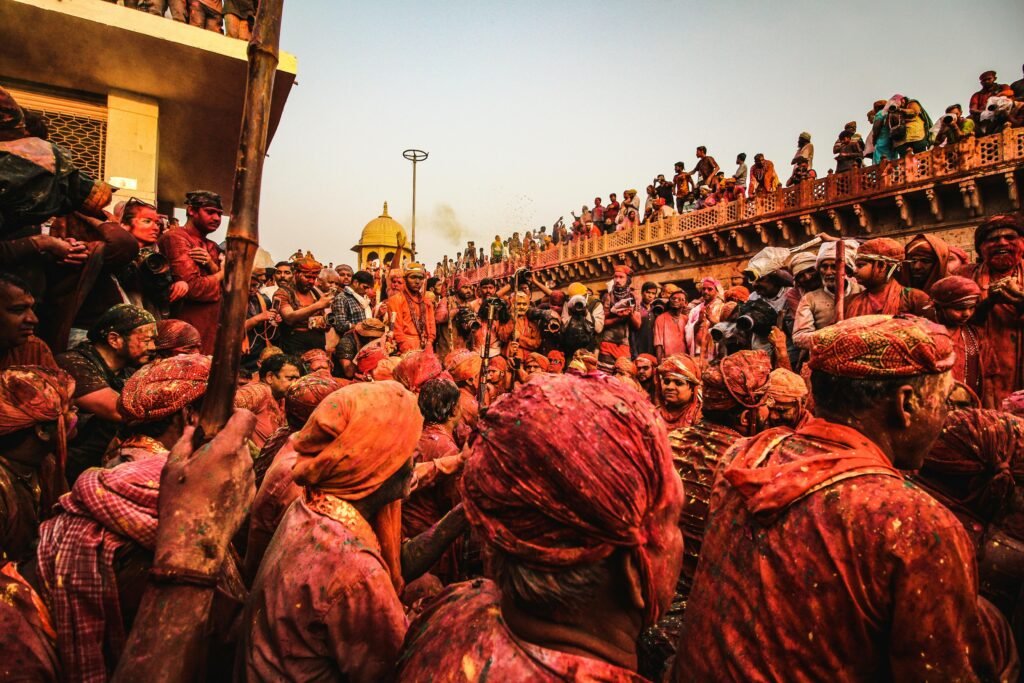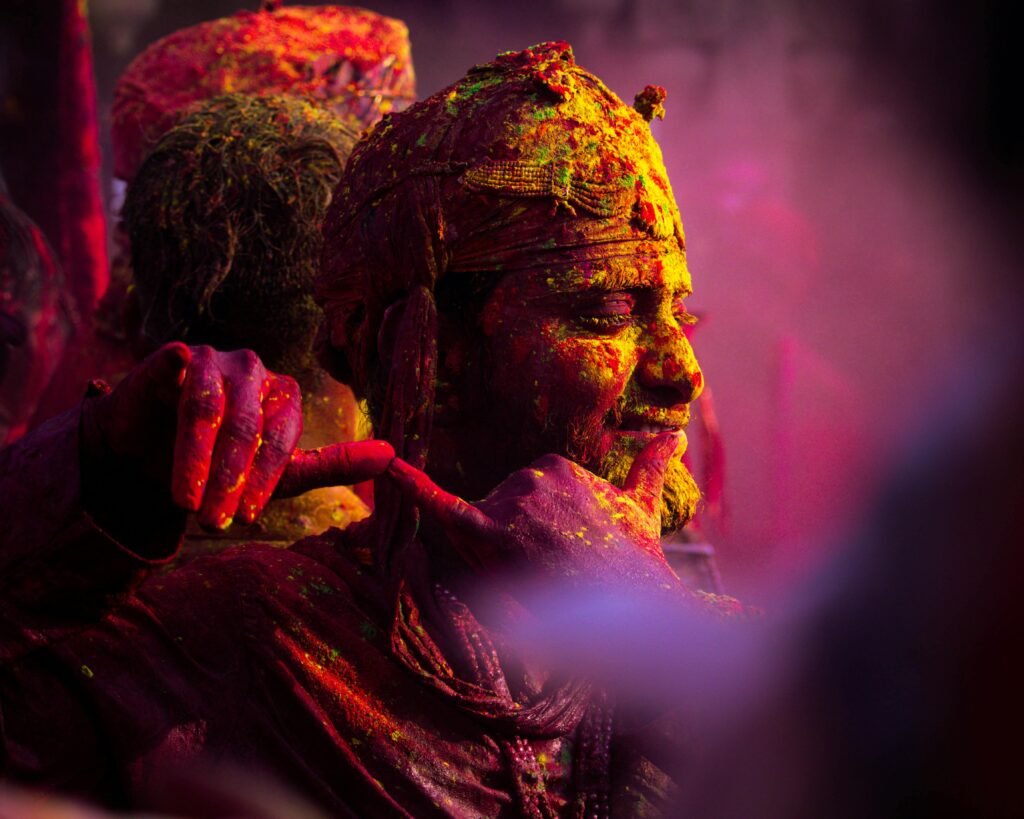
Introduction:Understanding Temple Visitor Patterns
When it comes to finding the best times to visit a temple, early mornings are usually your best bet. Most temples open around 5:00 AM, and during this time, the atmosphere is calm and spiritually charged. Afternoons, between 1:00 PM to 3:00 PM, also tend to be less crowded as devotees prefer to avoid the heat. However, evenings during the aarti, especially between 6:00 PM and 8:00 PM, attract large crowds. If you want a peaceful darshan, avoid peak morning and evening hours.
Seasons also play a big role in temple crowd patterns. Summer months usually see fewer visitors due to the heat, while winter months, particularly from October to March, witness increased footfall. Monsoon season, from June to September, tends to be quieter, making it one of the best times to visit a temple if you prefer fewer crowds. For instance, visiting temples in South India during the monsoon offers a cooler, refreshing experience.
Festivals drastically affect temple crowd patterns. During major Hindu festivals like Diwali, Navratri, and Maha Shivratri, temples overflow with devotees. Temples like Varanasi’s Kashi Vishwanath see lakhs of visitors during Shivratri. Similarly, Tirupati Balaji attracts over 50,000 pilgrims daily, but this number can double during Brahmotsavam. If you seek serenity, it’s best to plan your visit outside of major festival dates.
Weekdays generally offer a quieter and more peaceful darshan experience compared to weekends. Mondays and Thursdays often see moderate crowds, while Saturdays and Sundays attract local devotees and tourists alike. If you can plan your temple visit on a Tuesday or Wednesday, you’ll likely enjoy a calm, unhurried spiritual experience.
Early Morning: The Golden Hour of Spiritual Serenity

Benefits of Pre-Dawn Visits
Early morning is often considered the best time to visit a temple for a peaceful darshan. Temples open around 4:30 AM or 5:00 AM, just before sunrise. During this time, the atmosphere is calm, and the air is filled with spiritual energy. According to Hindu belief, Brahma Muhurta, the time between 4:00 AM and 6:00 AM, is ideal for meditation and prayer. This period is said to enhance focus, increase positivity, and cleanse the mind.
Morning Rituals and Their Significance
Morning rituals in temples begin with Abhishekam (bathing the deity), followed by Alankaram (adorning the idol) and Mangala Aarti (offering of light). Witnessing these rituals during early hours is considered highly auspicious. It’s believed that Lord Vishnu, Lord Shiva, and Goddess Lakshmi bless devotees who seek darshan during Brahma Muhurta. The serenity of the morning allows you to absorb the divine vibrations during these sacred ceremonies.
Tips for Early Morning Temple Experiences
To make the most of your early morning visit, arrive 15-20 minutes before the temple opens. Dress modestly and carry essentials like a water bottle and an offering. Avoid heavy meals before visiting, as a lighter stomach enhances spiritual focus. If possible, participate in Suprabhata Seva, the ritual that wakes the deity, for a more immersive experience.
Spiritual Benefits of Morning Darshan
Morning darshan is believed to cleanse the soul and set a positive tone for the day. According to ancient texts, offering prayers during Brahma Muhurta helps in seeking divine blessings and fulfills desires. Experiencing this peaceful time fosters a deeper connection with the divine, making early mornings the best time to visit a temple for spiritual serenity.
Weekday vs. Weekend Temple Visits
If you’re looking for the best times to visit a temple with fewer crowds, weekdays are ideal. Tuesdays and Wednesdays generally see fewer devotees compared to Mondays and Thursdays, which are considered auspicious. For instance, Lord Shiva temples witness larger crowds on Mondays, while Sai Baba devotees throng temples on Thursdays. Planning your visit midweek allows you to experience a calm and uninterrupted darshan.
Avoiding Peak Tourist Seasons

Tourist seasons can significantly impact temple crowd patterns. December to January, during the winter holidays, and summer vacation months often bring a surge of visitors. Pilgrimage sites like Vaishno Devi and Tirupati see higher footfall during these times. To avoid large crowds, plan your temple visit during off-peak months like July or September. These months offer the best times to visit a temple for a peaceful darshan.
Local vs. Tourist Crowd Patterns
Understanding local vs. tourist crowd patterns can help you time your visit better. Local devotees often prefer visiting early mornings or evenings after work, while tourists tend to visit during late mornings or afternoons. Popular temples like Meenakshi Amman Temple in Madurai and Jagannath Temple in Puri experience higher tourist influx on weekends, making weekdays a more serene option.
Midweek Spiritual Retreat Strategies
For a midweek spiritual retreat, plan your temple visit between Tuesday and Thursday. Arriving during the early morning hours enhances your spiritual experience. Participate in morning aartis or poojas to feel more connected with the divine. Midweek visits give you enough time to explore the temple’s surroundings and soak in the tranquility, making them the best times to visit a temple for both peace and devotion.
Seasonal Considerations for Temple Visits
Off-Peak Travel Seasons
If you’re seeking the best times to visit a temple with fewer crowds, aim for off-peak travel seasons. Monsoon months (June to September) usually see fewer pilgrims, making it easier to enjoy a peaceful darshan. Similarly, post-festival periods offer calmer atmospheres, as crowds decrease after major celebrations. Visiting during these quieter times ensures that you have ample space for reflection and prayer.
Weather Impacts on Temple Visits

Weather plays a crucial role in determining your temple visit experience. Summer months, especially from April to June, can be scorching, making daytime visits uncomfortable. On the other hand, winter months (November to February) provide pleasant weather, ideal for long spiritual journeys. If you’re planning a pilgrimage to hill temples like Kedarnath or Vaishno Devi, summer and early autumn offer safer travel conditions. Mild temperatures make these periods the best times to visit a temple in such regions.
Regional Festival Calendars
Hindu temples experience a surge of devotees during festival seasons. Festivals like Navratri, Diwali, and Makar Sankranti draw large crowds, making it difficult to enjoy a quiet darshan. Temples like the Jagannath Temple in Puri and Tirupati Balaji witness lakhs of visitors during Rath Yatra and Brahmotsavam, respectively. To avoid these rush periods, check regional festival calendars before planning your visit.
Best Months for Peaceful Temple Experiences
For a peaceful temple experience, consider visiting between February and April or from late September to early November. These months strike a balance between pleasant weather and fewer crowds, offering the best times to visit a temple. During these periods, you can explore the temple’s spiritual ambiance without feeling rushed or crowded.
Special Timings and Lesser-Known Temple Visiting Hours
Midday Quiet Hours
If you prefer solitude, midday hours (between 1:00 PM and 3:00 PM) can be the best times to visit a temple. During this period, most devotees avoid the heat, creating a calm and quiet atmosphere. While morning and evening see higher footfall, midday offers a peaceful darshan, perfect for meditation and reflection. Temples like the Meenakshi Amman Temple in Madurai are relatively quieter during this time.
Late Evening Darshan Times
Late evening, post-aarti hours, around 8:30 PM to 9:30 PM, also offer a serene temple experience. The crowd thins after the main rituals, giving you a quiet moment for personal prayers. According to legend, Lord Shiva’s blessings are most powerful during the twilight hours. Temples like Somnath and Varanasi’s Kashi Vishwanath offer late evening darshans, ideal for a peaceful spiritual connection.
Off-Hours for Specific Temples
Certain temples have unique off-hours that many devotees overlook. For instance, Tirupati Balaji offers a Nijapada Darshan early in the morning, allowing devotees to see the deity without elaborate adornments. Similarly, Shirdi’s Sai Baba Temple experiences less crowd after the afternoon aarti, making it one of the best times to visit a temple. These off-hours ensure a more personal and fulfilling experience.
Unique Visiting Strategies for Different Temple Types
Each temple has its own rhythm. For pilgrimage sites like Vaishno Devi, trekking at dawn helps avoid crowds at the shrine. At hill temples like Palani or Sabarimala, starting early morning climbs ensures cooler temperatures and fewer pilgrims. Understanding these unique visiting patterns can help you choose the best times to visit a temple and enhance your spiritual journey.
Special Considerations for Popular Temples
Crowd Patterns at Iconic Temples
Popular pilgrimage sites like Tirupati Balaji, Shirdi Sai Baba Temple, and Vaishno Devi witness heavy crowds throughout the year. Tirupati attracts over 50,000 devotees daily, with weekends and festival days drawing even larger crowds. Shirdi experiences peak rush on Thursdays, while Vaishno Devi sees a surge during Navratri. Planning your visit during off-peak hours ensures a more peaceful darshan.
Suggested Timings for Visiting Famous Pilgrimage Sites
For Tirupati, early mornings (between 3:00 AM and 6:00 AM) during Suprabhata Seva offer a calm atmosphere. Shirdi is best visited after the afternoon aarti (around 3:00 PM), ensuring a quieter experience. Vaishno Devi devotees should consider starting the trek at dawn to avoid heavy crowds. These timings provide the best times to visit a temple, allowing you to connect with the divine in peace.
Practical Tips for a Peaceful Temple Visit
To make the most of the best times to visit a temple, follow a few practical tips. Dress modestly, with traditional attire like sarees, salwar suits, or dhotis, as many temples enforce strict dress codes. Carry essentials like a water bottle and avoid wearing flashy jewelry. Maintain silence inside the temple premises, as loud conversations disturb the serene atmosphere. Avoid taking photos where prohibited, as it’s considered disrespectful. Temples like Kedarnath and Guruvayur strictly follow these etiquette rules.
For popular temples, book your darshan tickets online to avoid long queues. Tirupati and Vaishno Devi offer advance booking options, saving you valuable time. Local devotees often know the best entry points and less crowded hours—asking them can give you an edge. Arriving early, following these guidelines, and respecting temple traditions ensure a calm and meaningful experience, making it one of the best times to visit a temple. Read the blog to explore the fascinating science behind temple energy and discover how ancient temples promote positivity and healing.
Conclusion: Plan Ahead for a Blissful Temple Visit
To experience the best times to visit a temple, plan your visit wisely. Arrive early, preferably during Brahma Muhurta, to enjoy peaceful surroundings. Avoid peak hours, festival seasons, and midday heat for a calm darshan. Weekdays, especially midweek mornings, often offer quieter temple atmospheres. Consider booking VIP or express darshan services at popular temples like Tirupati or Shirdi to skip long queues.
Follow dress codes, maintain silence, and respect temple customs to enhance your spiritual experience. Seeking local advice can also help identify less crowded entry points and ideal visiting hours. You can simplify your temple visit by using the Divyakripa app, which offers insights, booking options, and devotional resources. By planning ahead and following these tips, you ensure a serene and fulfilling darshan, making your journey truly divine. The best times to visit a temple are when your mind and heart are at peace.


